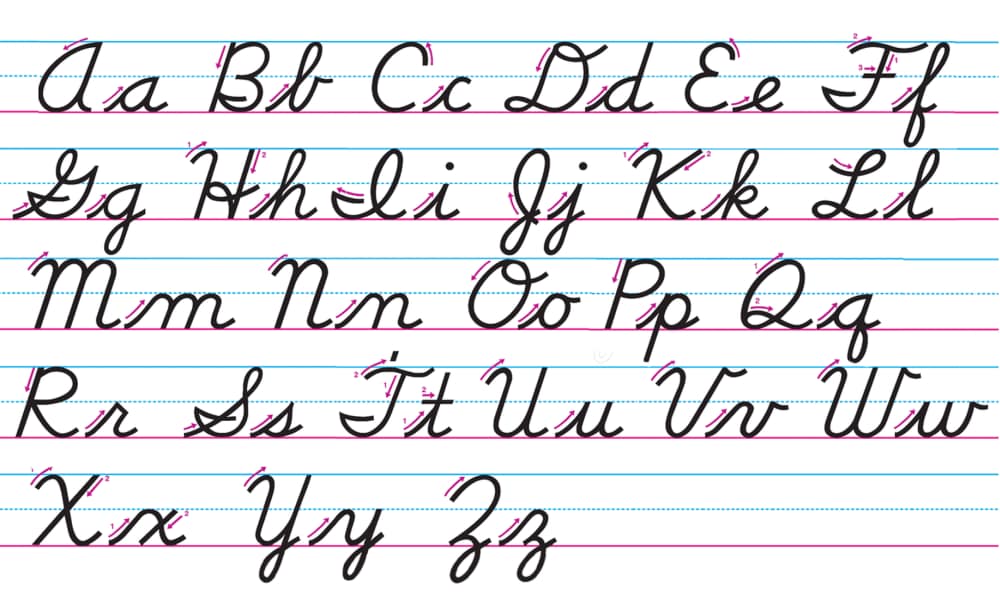
Why is cursive no longer taught to kids these days? It’s no coincidence that its use is dwindling. In an era dominated by digital communication, the art of cursive writing seems to have lost its place. Yet, cursive offers more than just a way to pen words—it’s a cognitive exercise that integrates hand-eye coordination with linguistic processing.
Cursive requires the writer to think differently. It compels you to translate fleeting thoughts into continuous, flowing script, demanding focus and discipline. This effort isn’t just about writing; it’s about shaping ideas into a coherent narrative on paper, fostering a deeper connection between thought and expression.
The very term ‘cursive’ stems from the Latin ‘currere,’ meaning to run or flow. This etymology captures the essence of cursive as a fluid, dynamic form of writing that mirrors the swift movement of thoughts. Historically, cursive was valued for its efficiency and elegance, traits that contributed to its widespread adoption across cultures.
Despite the challenges posed by technological advancement, cursive holds enduring benefits. It strengthens fine motor skills, enhancing dexterity and precision in hand movements. Moreover, research suggests that mastering cursive contributes to the development of neural pathways that support reading comprehension and language acquisition later in life.
Beyond its practical advantages, cursive remains a symbol of cultural heritage and tradition. Originating in Italy and spreading worldwide, cursive writing reflects a shared human endeavor to communicate with clarity and grace. Its unique form poses a puzzle to artificial intelligence, which struggles to interpret its intricate strokes.
In essence, while the role of cursive may have evolved in today’s world, its intrinsic value as a tool for cognitive development and cultural expression endures. By nurturing the art of cursive writing, we not only preserve a rich aspect of our linguistic heritage but also pave the way for future generations to connect deeply with language and thought.



